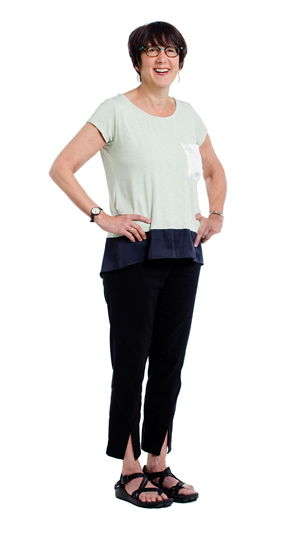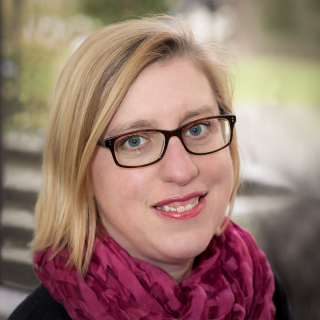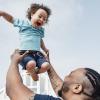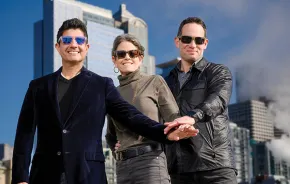
Autism expert Wendy Stone, Ph.D., never thought she’d end up on Sesame Street. She’s one of the experts behind the creation of Julia, the iconic show’s newest character and its first with autism.
“I’ve gotten more attention for Julia than anything I’ve done,” says Stone, professor of psychology and director of the READi (Research in Early Autism Detection and Intervention) Lab at the University of Washington.
In 2008, Sesame Street’s parent company, Sesame Workshop, asked Stone and colleague Evon Lee to share everything they knew about autism. Thus began a partnership that has created a vast array of educational outreach materials for teachers, parents and families of children with autism.
There are also videos for kids as well as daily routine cards, online storybooks and videos for parents. But it was the April debut of Julia that brought worldwide attention to the woman who works in a tiny corner office overlooking the Lake Washington Ship Canal.
Learn more about participating in studies at the READi Lab here.
What were the trickiest parts of creating a Muppet with autism?
There’s a saying in the autism world: “If you’ve met one child with autism, you’ve met one child with autism.” When [Sesame Workshop] first asked our opinion, I didn’t think creating a Muppet with autism was a great idea. We didn’t want to create this reified image that defines autism. But if anybody can do it well, it’s Sesame Street!
What’s your favorite educational material that you’ve created with Sesame Workshop?
I love the videos they’ve made of actual kids with autism interacting with their parents and siblings and with the Abby Cadabby Muppet. They’re super helpful in showing that this is a kid, a child, not just an autistic child.
Viewers see that some of the behaviors kids with autism have are different from the behaviors of kids without autism, but there are also lots of similarities. They also show how parents and siblings are dealing with these differences. The more exposure children have to kids who are different, and the more strategies children can learn to find similarities and to appreciate differences, the better off we are all going to be as adults.
What are you working on right now?
My research is on early identification for autism, with the goal of trying to figure out how to recognize and treat autism at 2 years or younger. We know that autism-specialized early intervention can be very effective in improving children’s social interactions, communication, behavior and play skills. We want them to be in a regular kindergarten classroom by the time they’re 5.
What led to your career in autism research?
Ever since I was a young child, I liked working with kids. While I was a research assistant in grad school for clinical psychology, I worked with kids with special needs. From there, it was serendipity: I chose my clinical internship based on my adviser’s recommendation, but there I learned everything I know about autism.
When I moved to an academic position in Miami, I was pegged as the go-to person for autism since there were very few specialists at that time. My commitment to that role was solidified when I finally bought a subscription to the Journal of Autism. At that point, I knew that autism would probably be my life work.
What do you love about your work?
The world can be quite challenging for a child with autism who doesn’t understand language or social cues, who prefers predictability and routine, and who may be hypersensitive to certain sensory experiences. But once we try to understand what that experience could be like, we can start to develop strategies to help. It’s fascinating to find what makes the child tick. It’s especially gratifying to help parents with young children learn how to work and play with their child.
What’s the most fascinating aspect of autism research right now?
How much it has changed! Autism first became a diagnostic category in 1980, and it was paired with childhood schizophrenia. Then, the prevalence of autism was 3 or 4 per 10,000 children; now, it’s 1 in 68.
Now we tell parents that their young child has characteristics of autism, but with early intervention, they may see significant improvements, so we’ll see what happens over time. It seems like we’re at the beginning of a different conceptualization of autism.











